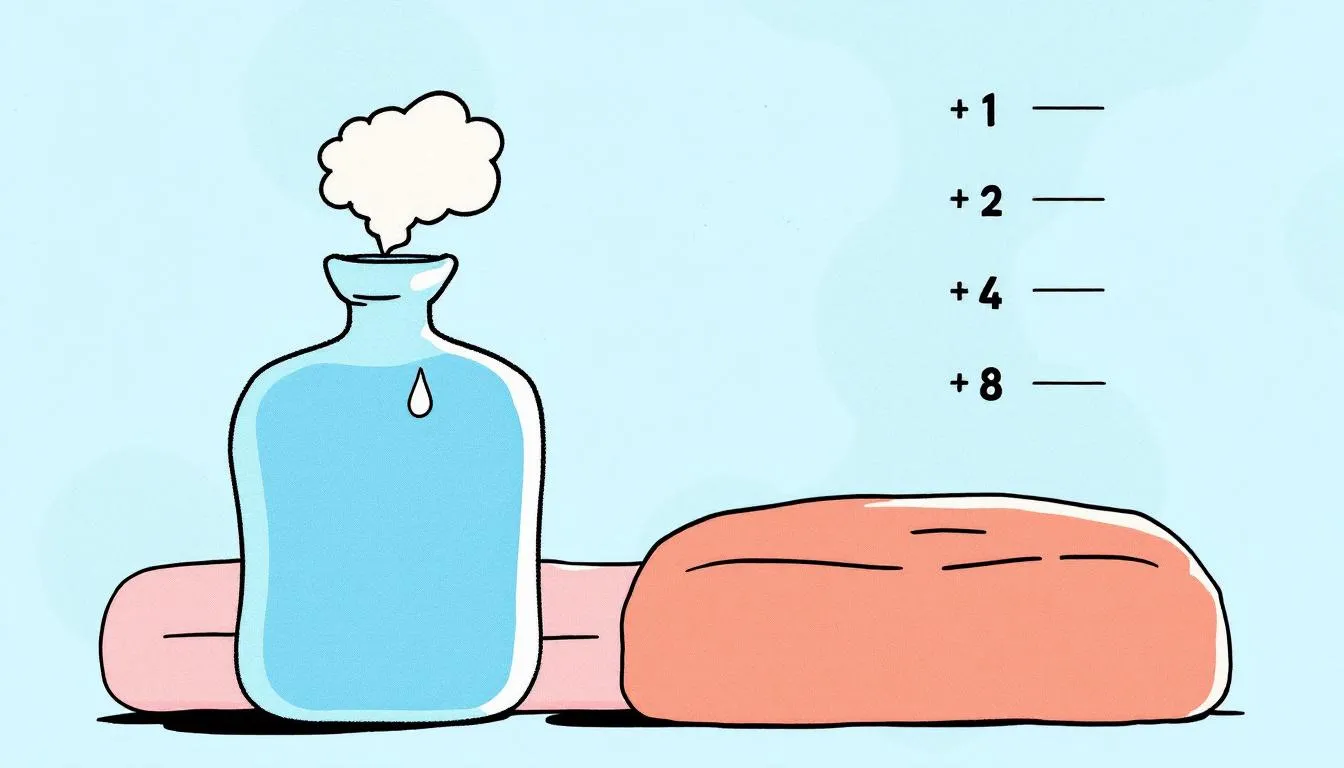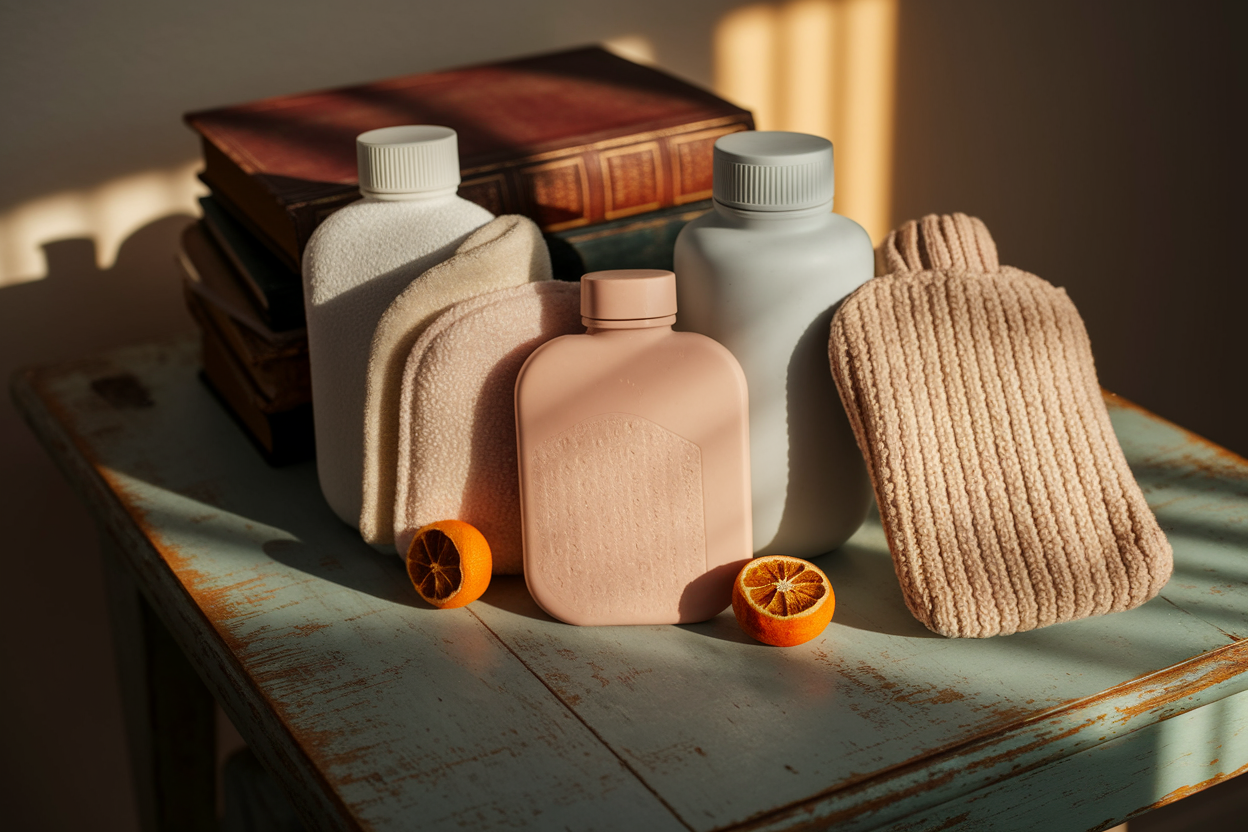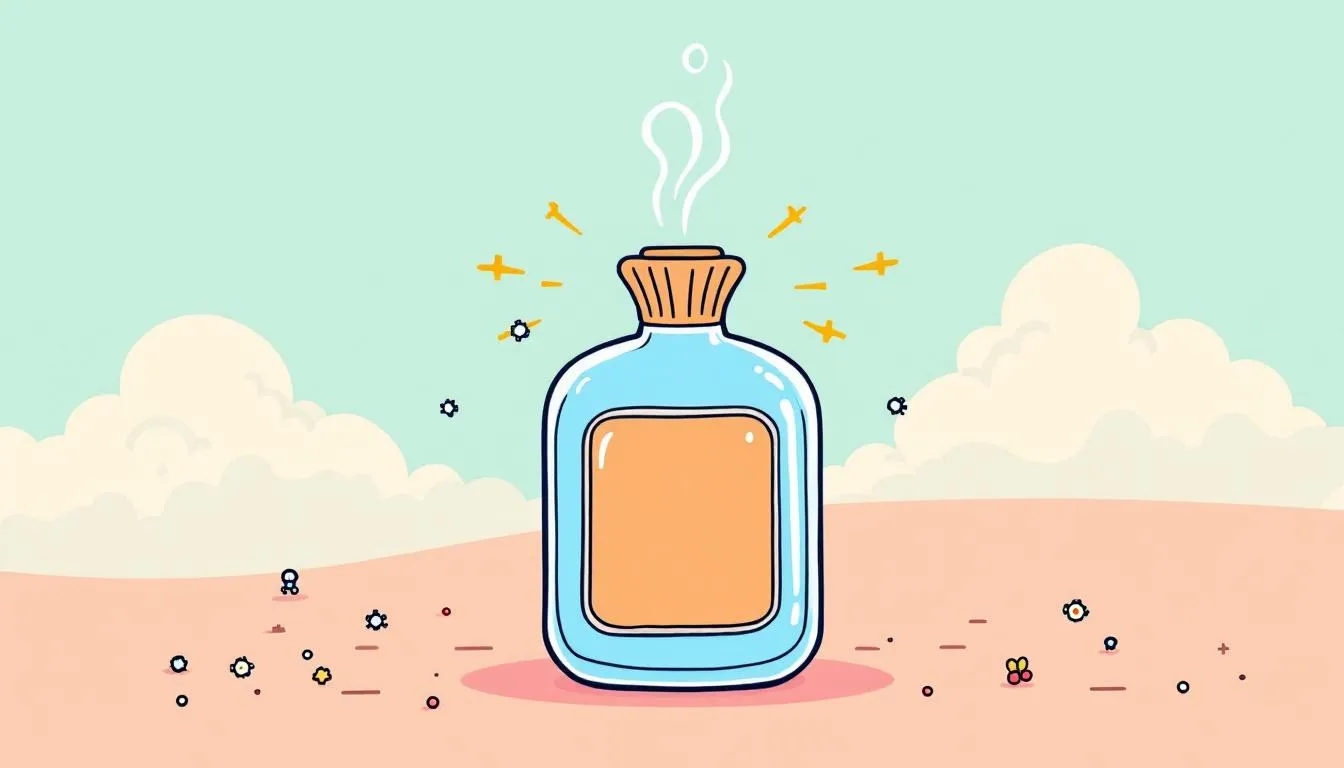
How Long Does a Hot Water Bottle Stay Hot? Essential Insights Revealed
How Long Does a Hot Water Bottle Stay Hot? Tips to Maximize Heat Retention
If you’ve ever wondered “how long does a hot water bottle stay hot,” the answer is generally between 2 to 6 hours. The exact duration can vary depending on the material, initial water temperature, and type of cover used. In this article, we’ll explore all these factors to help you maximize your hot water bottle’s warmth.
Key Takeaways
-
Hot water bottles can stay warm for 2 to 6 hours, depending on factors like material, water temperature, and type of cover used.
-
Choosing high-quality materials and using insulating covers can significantly enhance a hot water bottle’s heat retention.
-
Safety is crucial; always use water around 60-65°C, avoid boiling water, and ensure the bottle is checked for wear before use.
Understanding Hot Water Bottle Heat Retention

The humble hot water bottle is a marvel of simple engineering. At its core, it works by:
-
Containing hot water to provide warmth through thermal conduction.
-
Gradually transferring heat from the water to the bottle’s material.
-
Transferring heat from the bottle’s material to the air around it, primarily through convection.
This slow escape of heat is what allows a hot water bottle to maintain its warmth for a significant period, making it a reliable companion on cold nights that stays hot and helps you lose heat.
However, the magic of a standard hot water bottle isn’t just in its ability to get warm but in how it manages to stay warm. The design and material of the long hot water bottle allow heat to escape slowly, ensuring prolonged warmth. This is why you can tuck a hot water bottle under your blankets and enjoy several hours of comforting heat.
But, like all good things, the heat doesn’t last forever. Hot water bottles cool down gradually, a process that can be influenced by various factors we’ll explore in this guide. Understanding these principles is crucial because it sets the stage for optimizing your hot water bottle’s performance.
Understanding heat retention allows you to choose the right bottle, fill it appropriately, and use the best cover to enhance its effectiveness. Let’s explore the factors that influence the duration your hot water bottle remains warm.
Factors That Affect How Long Hot Water Bottles Stay Warm

Several factors influence how long hot water bottles stay warm, including the material quality, initial water temperature, and bottle size. Each of these elements plays a crucial role in determining the duration of warmth you can expect.
The material of the bottle, the type of cover, and the initial water temperature, along with other materials, all play crucial roles in heat retention. We’ll examine each factor in more detail.
Material of the Hot Water Bottle
The material of your hot water bottle is one of the most critical factors in heat retention. Various materials, including rubber and thermoplastic, are commonly used to make hot water bottles. However, not all materials are created equal. Rubber and silicone are particularly well-regarded for their heat retention properties. High-quality materials can significantly increase the efficiency of heat retention, ensuring that your bottle stays warm for a longer period.
Silicone hot water bottles offer heat retention comparable to a rubber bottle, making them another excellent option. Investing in the best hot water bottle made of durable, high-quality materials can pay off in the long run, as it will not only keep you warmer but also last longer. Modern hot water bottles are a great addition to this category.
Choosing a bottle made of high-quality materials ensures maximum heat retention.
Type of Cover Used
The type of cover you use can significantly impact the heat retention of your hot water bottle. Key points include:
-
Covers made from materials like fleece can enhance heat retention significantly.
-
A good cover acts as an additional layer of insulation.
-
It prevents the heat from escaping too quickly.
-
It keeps the bottle warmer for longer.
Investing in a good quality winter cover can significantly enhance warmth in the room and keep you covered.
Initial Water Temperature
The initial temperature of the water you use to fill your hot water bottle is crucial. Consider the following points:
-
Fill the hot water bottle with water at approximately 60-65°C to maximize heat retention.
-
This temperature provides the right balance between being hot enough for prolonged warmth and safe enough to avoid burns.
-
Using water that has cooled slightly from boiling can enhance the longevity of the heat.
The temperature of the water plays a critical role in the bottle’s ability to retain heat. If the water is too cold, it may not provide enough initial heat, diminishing the effectiveness of the hot water bottle. On the other hand, boiling water can provide warmth for about 2-3 hours, but it may not be the safest option.
Achieving an optimal water temperature is essential for prolonging warmth and warming.
Typical Duration of Warmth
Under normal conditions, hot water bottles typically stay warm for 2 to 6 hours. This duration can vary based on several factors, including the material of the bottle, the type of cover used, and the initial water temperature. For instance, hot water bottles filled with boiling water usually provide warmth for about 2-3 hours. However, using water that is slightly cooled from boiling can extend this warmth to the higher end of the range.
The optimal water temperature for filling a hot water bottle filled to maximize heat retention is close to boiling temperature. This ensures that the bottle provides sufficient warmth initially and maintains it for a longer period.
However, it’s important to note that using cold water that is too cold may not offer enough initial heat, leading to a shorter warmth duration. Understanding these typical durations can help you better plan your use of hot water bottles to keep warm effectively.
Maximizing Hot Water Bottle Heat Retention

Several strategies can help maximize your hot water bottle’s heat retention, including proper filling, using insulating covers, and minimizing how often you open it.
Let’s explore these methods in detail at this point, as they may vary depending on the same way context.
Proper Filling Techniques
To maximize heat retention with a hot water bottle, follow these guidelines:
-
Fill the bottle to no more than two-thirds of its capacity to avoid overfilling.
-
Ensure the bottle is tightly sealed to prevent leaks.
-
Use hot water bottles made of thick, durable materials to help retain heat effectively.
-
Always follow the manufacturer’s instructions for filling and usage to maximize the duration of warmth.
Ensure all air is removed before sealing the bottle to prevent injuries and maintain consistent warmth. Following these practices can maximize heat retention and prolong comfort.
Using Insulating Covers
Special covers designed for hot water bottles can significantly improve heat retention. There are various types of covers available, including:
-
Knitted covers
-
Animal-inspired covers
-
Soft faux fur covers
-
Cushion covers
While it is not necessary to use a cover on a hot water bottle, wrapping it in a towel is recommended. Tightly fitted covers can help prevent heat loss, and thick, insulating covers like wool or fleece help retain heat longer.
A cover not only improves heat retention but also adds a layer of safety, preventing burns and making the bottle more comfortable, particularly for children and the elderly.
Avoiding Frequent Opening
Minimizing the number of times you open the hot water bottle helps maintain its internal temperature. Frequent openings can cause a significant drop in the internal temperature of the bottle, reducing its effectiveness.
Minimizing how often you open the bottle helps it stay warmer for longer.
Safety Tips for Using Hot Water Bottles

Safety is paramount when using hot water bottles. Follow these guidelines:
-
Always avoid using boiling water to fill the hot water bottle; hot water is the safest option.
-
Fill the bottle only to three-quarters full to reduce the risk of bursting.
-
Remove all air before sealing the hot water bottle to avoid injuries from hot air.
-
Do not give hot water bottles to babies due to safety concerns.
Regular checks for damage and wear are essential. Follow these steps to ensure safety:
-
Inspect the hot water bottle for signs of wear, including cracks or fading, before each use.
-
If the bottle shows any signs of wear, replace it immediately to avoid burns.
-
Typically, hot water bottles need replacement every two years.
It is important to avoid direct contact between the hot water bottle and your skin. This will help prevent burns or discomfort. Wrapping the bottle in a cloth or towel can help prevent burns. Additionally, never use hot water bottles in conjunction with electric blankets to prevent hazards. Adhering to these safety tips ensures you can enjoy the comfort of hot water bottles safely.
Benefits Beyond Warmth

Hot water bottles offer benefits beyond just keeping you warm, including: hot water bottles
-
Relieving back pains by relaxing tight muscles and enhancing blood flow
-
Blocking pain signals by stimulating the body’s heat receptors
-
Serving as a great alternative to how pharmaceutical painkillers work for some individuals, easing aches effectively.
Furthermore, using a hot water bottle can contribute to overall relaxation and relieving stress. The soothing effect of heat can help you unwind after a long day, making it easier to fall asleep and get a good night’s sleep. Incorporating hot water bottles into your routine can provide both physical and mental comfort.
Summary
In summary, understanding how hot water bottles work and the factors that affect their heat retention can help you maximize their effectiveness. By choosing high-quality materials, using proper filling techniques, and employing insulating covers, you can extend the warmth of your hot water bottle. Following safety tips ensures you can enjoy the benefits without any risks. Whether for warmth, pain relief, or stress reduction, hot water bottles are a versatile and valuable tool. Keep these tips in mind, and enjoy the cozy comfort they provide.
Frequently Asked Questions
Can I put boiling water in a hot water bottle?
You should avoid putting boiling water in a hot water bottle, as it can damage the seams and increase the risk of bursting. It's best to let the water cool slightly or mix it with cold water before filling.
How long does a hot water bottle stay warm?
A hot water bottle usually stays warm for about 2 to 6 hours, depending on the conditions. So, it’s perfect for keeping you cozy for a good while!
What is the best temperature for filling a hot water bottle?
The best temperature for filling a hot water bottle is around 60-65°C. This helps keep the heat longer while also ensuring safety.
How often should I replace my hot water bottle?
You should replace your hot water bottle every two years or sooner if you notice any signs of wear. Keeping it in good condition ensures your safety and comfort!
What are the benefits of using a hot water bottle?
Using a hot water bottle can do wonders for you! It not only provides warmth but also helps relieve back pain, reduce stress, and improve blood circulation.



